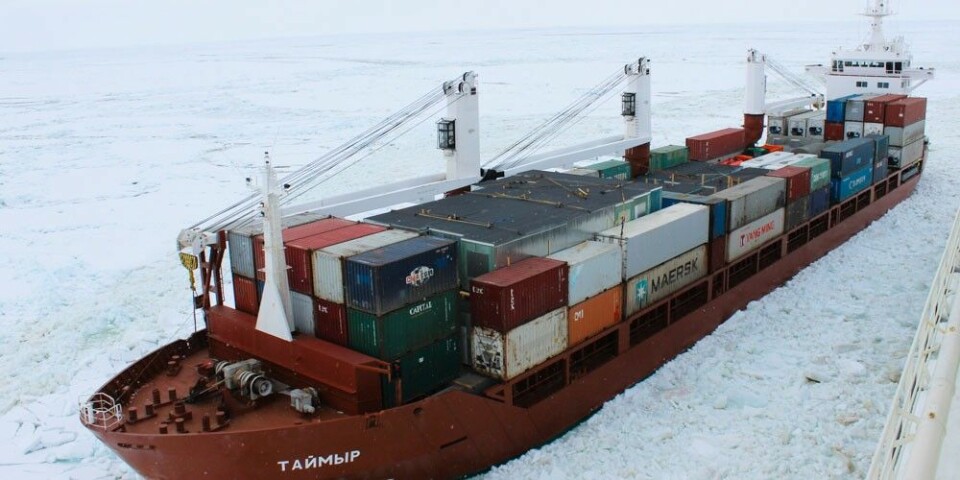
Moscow's big plan for trans-Arctic shipping: 2,000 percent growth in 10 years
The Russian government intends to boost annual transit volumes on the Northern Sea Route from 1,3 million tons in 2020 to 30 million tons in 2030.
“By 2030, we plan to reach a level of 150 million ton [on the Northern Sea Route], of which 30 million tons will be transit,” First Deputy Prime Minister Andrei Belousov said in a meeting on strategic development and national projects this week.
The online meeting was chaired by Vladimir Putin.
The president is half-way through his latest term and had summoned key government ministers for a status sum-up on his key priorities. Among them is the Northern Sea Route. Putin wants 80 million tons of shipments on the route by 2024, and government ministers are struggling to meet target.
The last years have seen a major increase in Russian Arctic shipping. In 2020, a total of 32,97 million tons of goods were shipped on the route, of which only about 1,3 million tons was transit shiphments.
The explosive growth notwithstaning, there is still a long way to go.
First Deputy Premier Belousov in Monday’s meeting assured that the shipping volumes for the far northern waters indeed will reach 80 million tons by 2024.
According to Belousov, big investments are in the pipeline. Over the next ten years, a total of 716 billion rubles (€8.25 billion) will be invested in infrastructure that will make the route navigable through the whole year. More than half of the sum, 400 billion rubles (€4.61 billion) will be spent before 2024, Belousov explained. Rosatom is to account for up to 260 billions of the sum.
The state nuclear power company is Putin’s main instrument in Northern Sea Route developments. The company is responsible for building of new infrastructure and icebreaking ships, including the super-powerful Lider vessel.
According to Kommersant, Rosatom is now in the process of signing an agreement with DP World, the Emirati logistics company, on Arctic container shipments. The deal will reportedly include an ambition to ship an annual of up to 30 million tons of cargo transit between Europe and Asia. The two companies will together facilitate the construction of a fleet of icebreaking container ships, some of them possibly nuclear-powered.
The ongoing dramatic changes in the Arctic are rapidly opening the former ice-locked waters and industry and shippers are increasingly catching interest.
With the melting sea-ice comes also a growing international interest. In his recent meeting with US President Joe Biden, Putin put the Northern Sea Route on the agenda and highlighted that Russia is “fully complying with international law on the route.”
“A coastal state is committed to provide peaceful passage, including for military vessels,” Putin said. “Are we really against that? No, we are in favor,” he underlined.
Also in this week’s meeting, Putin made clear that Russia is taking measures to provide for international shipments on the route. New legislation will adopted that make sure that Russia’s obligations fully harmonize with international laws, the president said.
A lion’s share of the growing Arctic shipping volumes is provided by LNG carriers. In the last week of July, five major tankers were sailing on the route that stretches from the archipelago of Novaya Zemlya and the Bering Strait. Several of the ships were heading eastwards from Sabetta, Yamal Peninsula, to China.
According to the Northern Sea Route Administration, there were on the 22nd of July a total of 64 vessels sailing in the remote Arctic waters, about ten of them east of the Taymyr Peninsula.
Ice maps from the Russia Arctic and Antarctic Research Institute show that almost the whole route is ice-free. In the days between 18-20th July, there was only minor layers of sea-ice in the northern parts of the Kara Sea, as well as the East Siberian Sea.

















